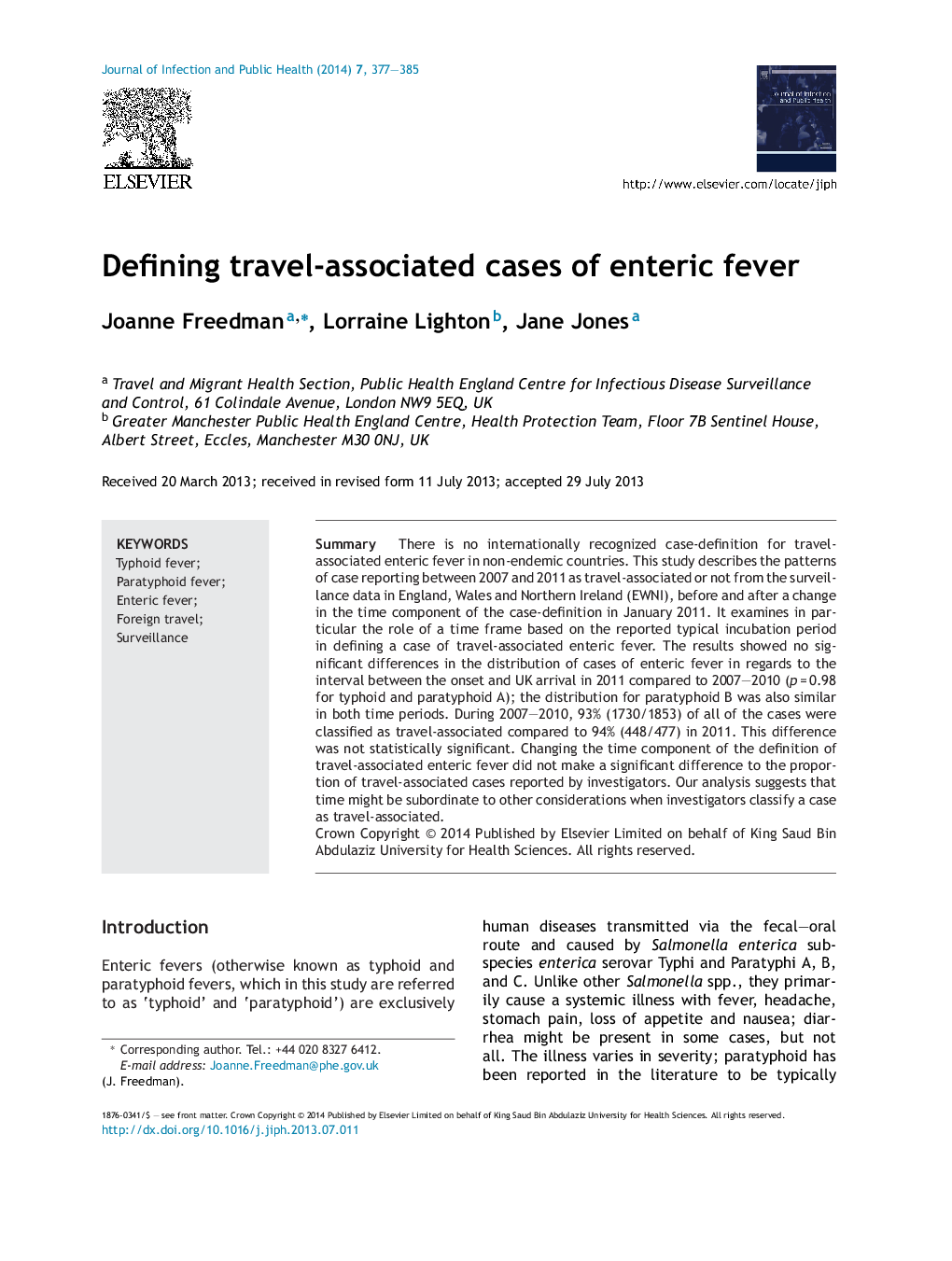| Article ID | Journal | Published Year | Pages | File Type |
|---|---|---|---|---|
| 3406061 | Journal of Infection and Public Health | 2014 | 9 Pages |
SummaryThere is no internationally recognized case-definition for travel-associated enteric fever in non-endemic countries. This study describes the patterns of case reporting between 2007 and 2011 as travel-associated or not from the surveillance data in England, Wales and Northern Ireland (EWNI), before and after a change in the time component of the case-definition in January 2011. It examines in particular the role of a time frame based on the reported typical incubation period in defining a case of travel-associated enteric fever. The results showed no significant differences in the distribution of cases of enteric fever in regards to the interval between the onset and UK arrival in 2011 compared to 2007–2010 (p = 0.98 for typhoid and paratyphoid A); the distribution for paratyphoid B was also similar in both time periods. During 2007–2010, 93% (1730/1853) of all of the cases were classified as travel-associated compared to 94% (448/477) in 2011. This difference was not statistically significant. Changing the time component of the definition of travel-associated enteric fever did not make a significant difference to the proportion of travel-associated cases reported by investigators. Our analysis suggests that time might be subordinate to other considerations when investigators classify a case as travel-associated.
